Last Updated: August 4, 2025
Set on the jungle-rich slopes of the Turrialba Volcano is one of the most important archaeological sites in Costa Rica, the Guayabo National Monument. Thought to have been first inhabited more than 3,000 years ago, these ancient ruins make up the largest pre-Columbian city ever discovered in Costa Rica. This historic civilization is even believed to have been home to nearly 10,000 people during its prime around AD 800. In this post, we will give you everything you need to plan your visit.
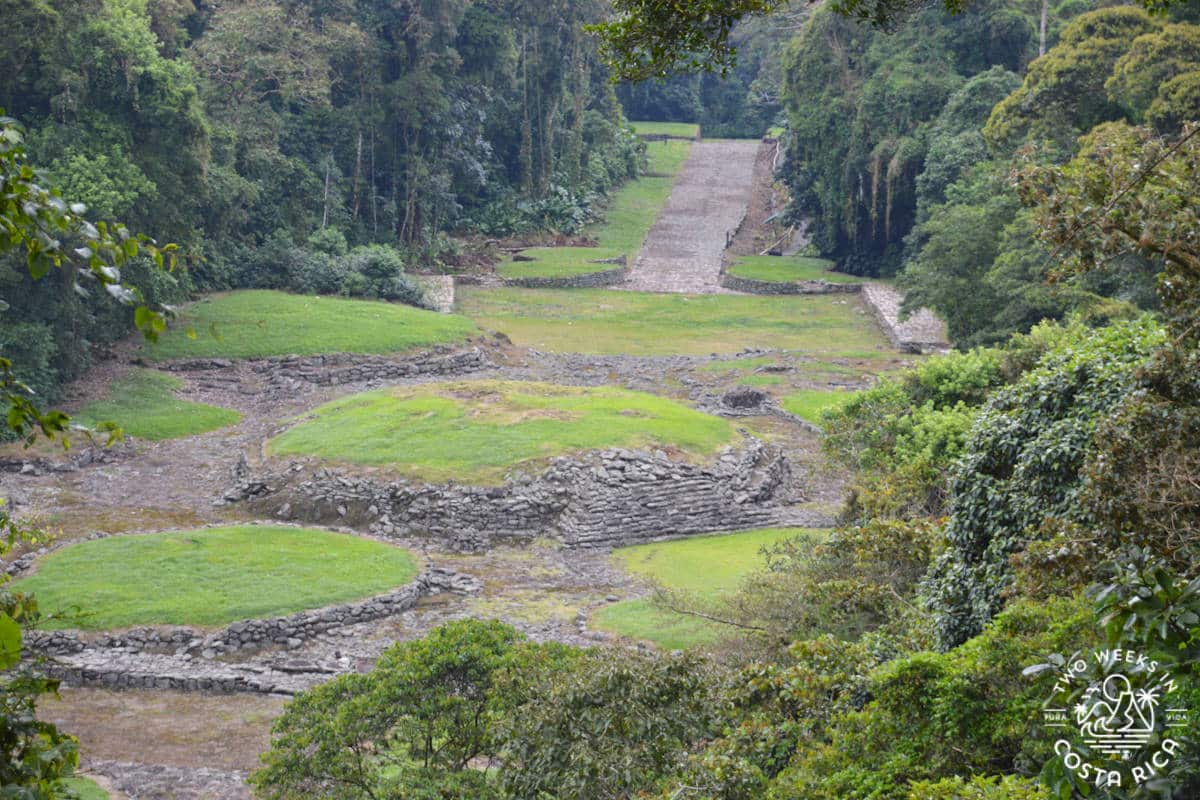
Location
Guayabo National Monument is located near the town of Turrialba. This beautiful area in the province of Cartago in Costa Rica’s Central Valley has rolling green mountains, coffee and farm fields, and the nearby Turrialba and Irazu Volcanoes. From downtown San Jose, Guayabo is around 2-2.5 hours away, making it possible as a day trip. See the end of this post for driving directions and hotel options in case you want to stay overnight in the area.
If you need a rental car for your trip, check out our special discount to save 10% with one of the best companies in Costa Rica. Free delivery to your hotel or airport pickup is included.
Map
History of Guayabo National Monument
When a professor from Costa Rica’s National Museum examined Guayabo’s first artifacts in the late 1800s, he thought that the site was little more than an ancient cemetery. It would take almost another 100 years for Guayabo’s true archaeological significance to unfold.
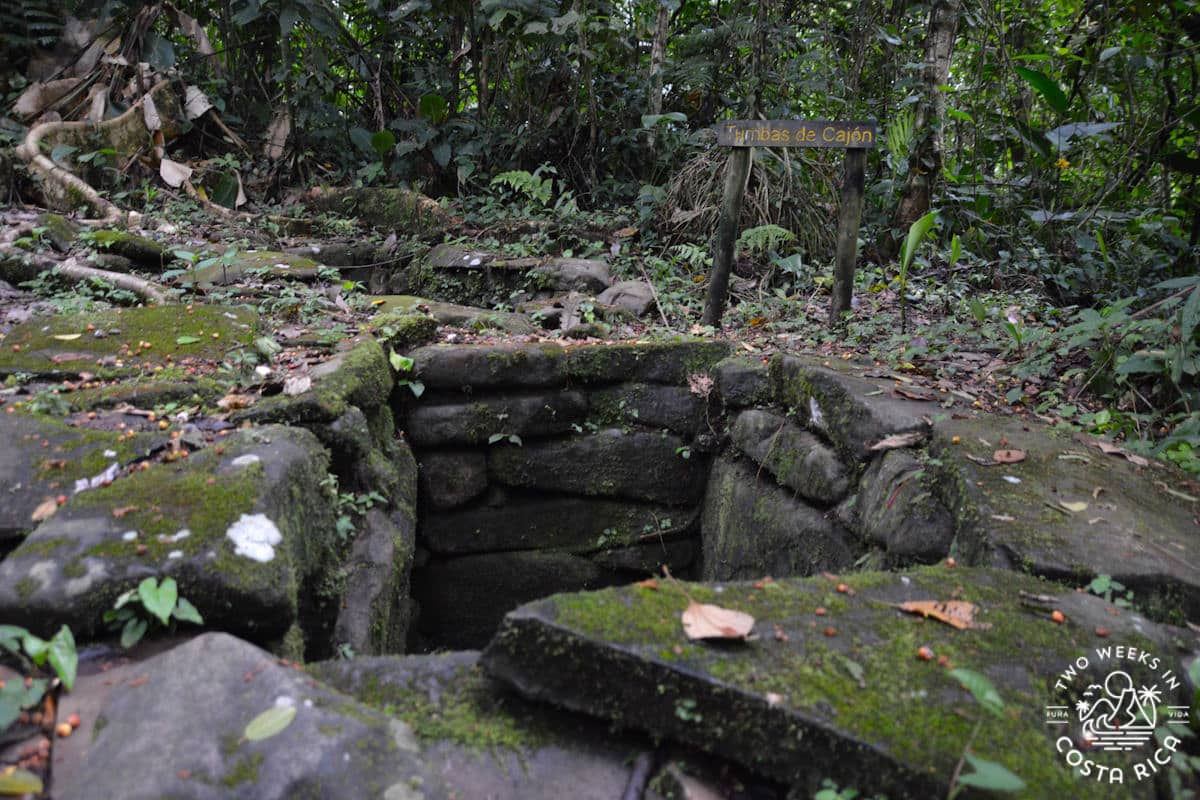
That happened in 1968 when Carlos Aguilar Piedra, an archaeologist from the University of Costa Rica, stumbled upon some stone foundations among the thick jungle. He began to selectively clear and excavate.
The magnitude of the site was soon realized, as 43 stone foundations, three aqueducts, two major roads, dozens of smaller paths, and various stone tombs were unearthed.
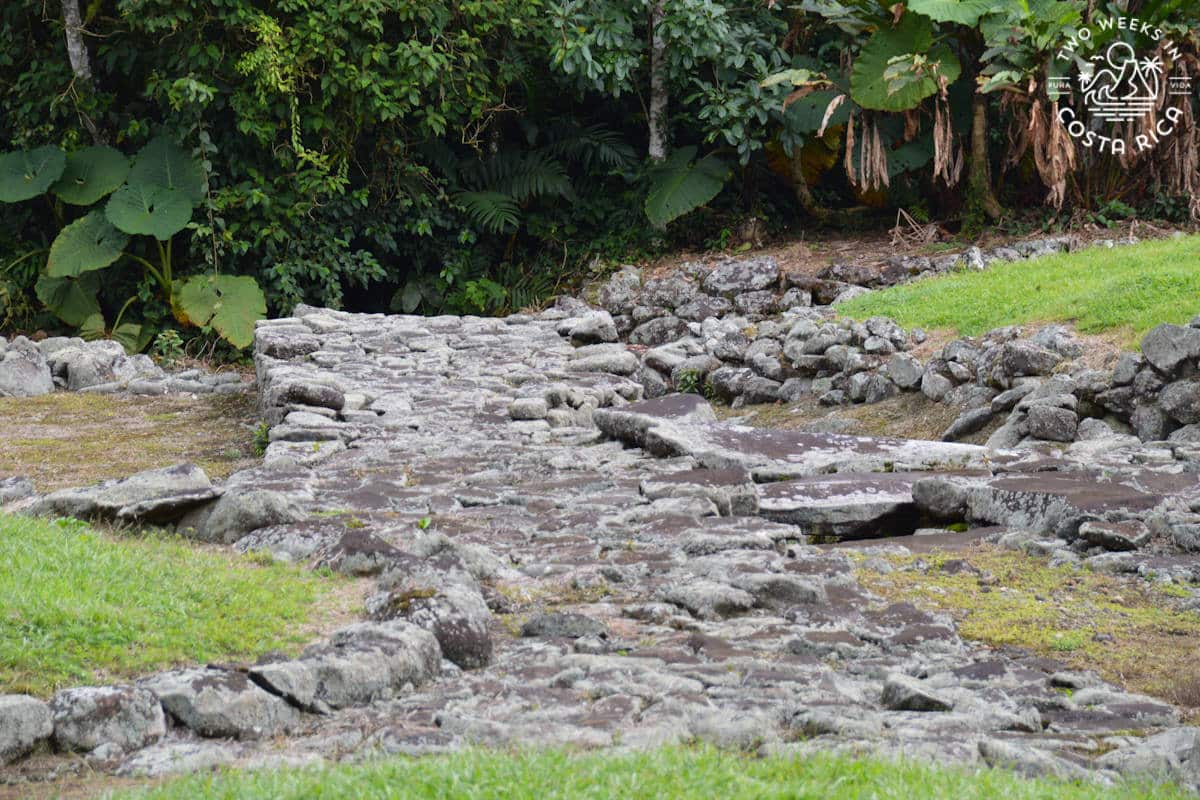
In 1973, the site was declared a National Monument by the Costa Rican government and opened to visitors. In 2009, the Guayabo National Monument was designated a Civil Engineering World Heritage site by the American Society of Civil Engineers.
Mayan Ruins?
Many people mistake the ancient remains at Guayabo as part of the Mayan civilization. But that is not the case. The Mayan empire was predominantly in southern Mexico, Guatemala, and northern Belize. It only reached as far south as El Salvador and Honduras in Central America.
Instead, the artifacts at Guayabo National Monument were determined to be from an unnamed ancient civilization that inhabited the region from 1000 BC until AD 1400. The findings revealed a lost culture with advanced development in civil engineering, architecture, and urbanism.
Unlike other pre-Columbian cities and cultures that were documented by early explorers, no record of this group was ever mentioned in journals, and the reason for its demise is still unknown. In fact, the city was abandoned around 1400 AD, about a century before Spanish colonization even began.

Accessing Guayabo National Monument
Guayabo National Monument is not technically one of Costa Rica’s national parks but is managed by the government organization SINAC (National System of Conservation Areas). It is open every day, and you can purchase admission upon arrival (see details later in this post). The site has two short trails and a small museum.
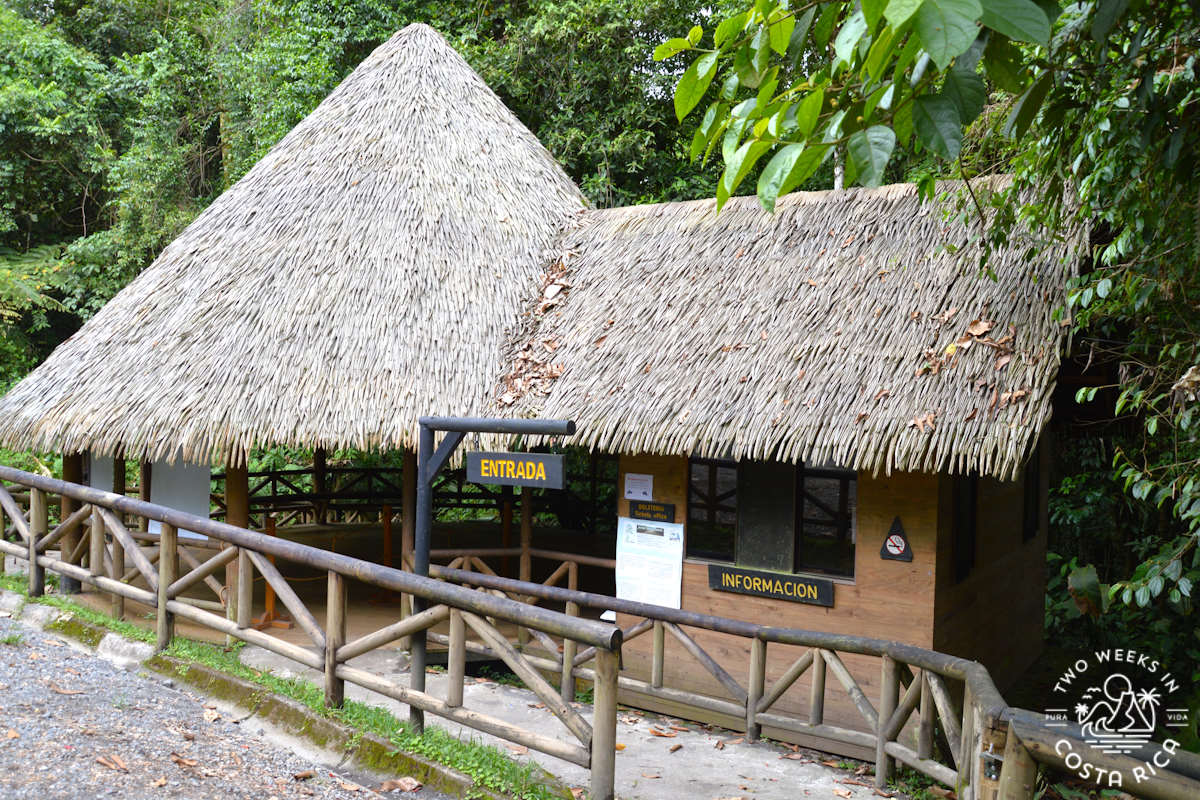
What You’ll See
Although not as grand as other well-known archaeological sites in the Americas like Machu Picchu in Peru or Tikal in Guatemala, Guayabo is still impressive in its own right. For Costa Rica, the site is the most elaborate example of a pre-Columbian civilization.
Along Guayabo National Monument’s simple trails, you’ll come to several archaeological attractions. Be aware that the trails are sectioned off from the artifacts with railings, so you can only see things from afar, but you can still get a decent look. Here are the most prominent features.
Stone Foundations and Steps
A network of stone piles and steps can be seen in the fields. These served as the foundations for homes and other buildings.
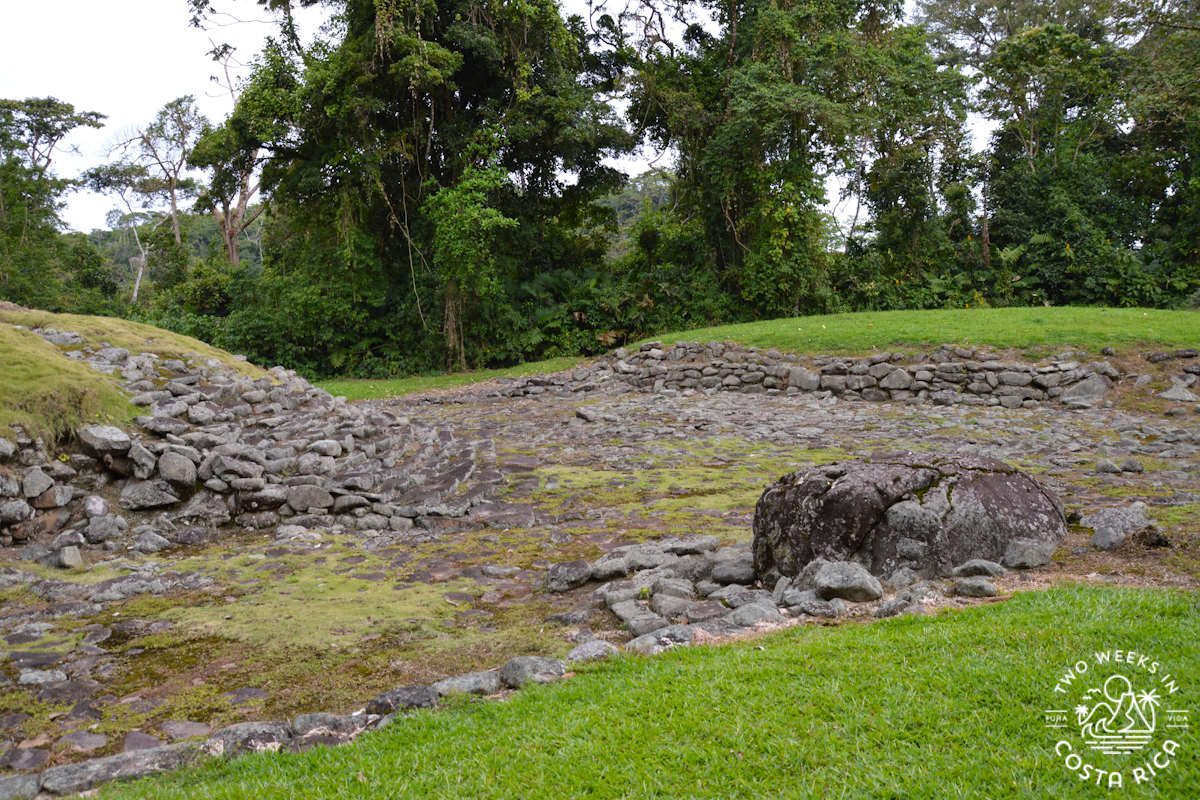
Although all that remains today are the rocks, it is believed that sheltered structures were constructed on top of these platforms using wooden posts and thatched roofs.
A model of the thatched-roof buildings has been recreated near the ranger station to give you an idea of what they might have looked like.

Cobblestone Walkways and Roads
A series of paved avenues connect the site’s main areas and former buildings. They’re pitched and elevated for drainage, which was important for such a wet area. This shows that the people were skilled in engineering and urban planning.
Aerial analysis revealed that some of the roadways stretched up to 70 km (44 miles), though most of them remain hidden by jungle.
A viewpoint off Los Monticulos trail lets you see how the road connected to the structures, and is the best way to see how the site all ties together.
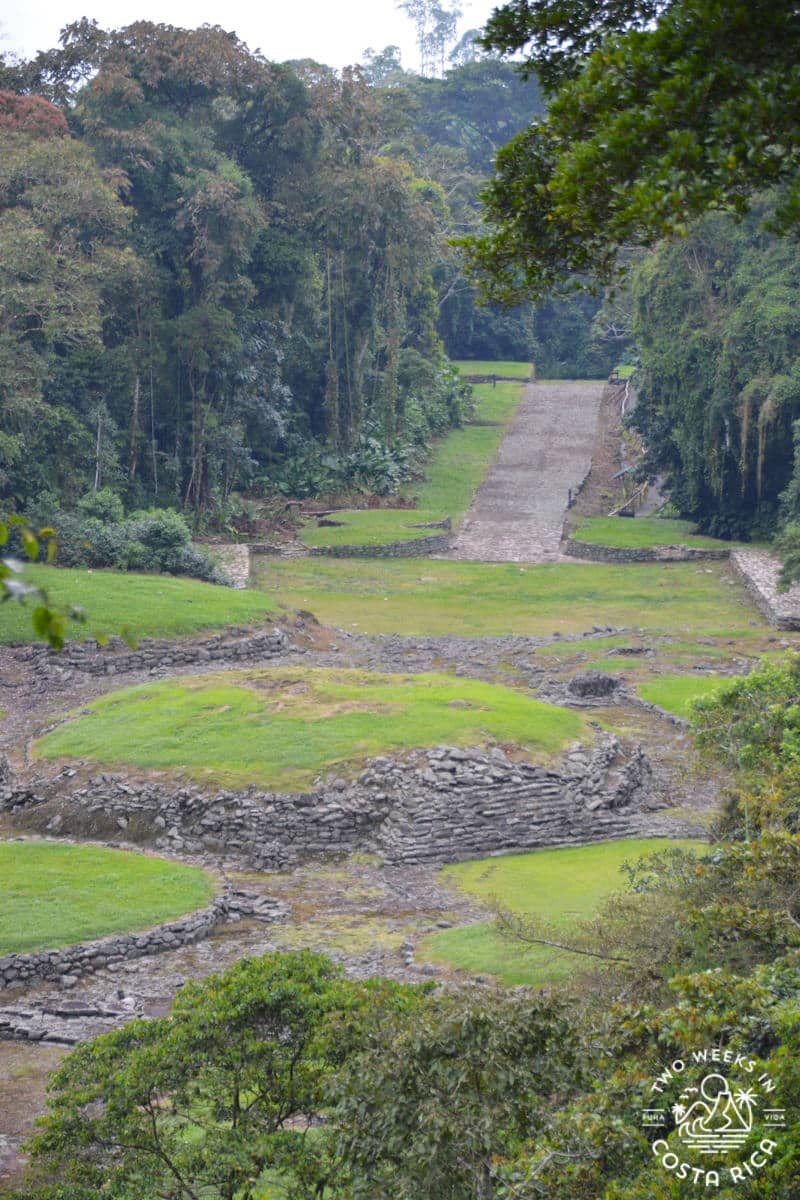
Aqueducts
The ancient people who lived at Guayabo used a system of open and closed aqueducts, including water storage tanks. These can be seen along the trail too. Some of these waterways are still functioning today and bubbling with clean spring water.
Studies show that the inhabitants chose the site carefully because of its clean water source. The fact that these systems are still working today further demonstrates how skilled they were in engineering.

Tombs
Stone tombs can be found right next to the trail and are open (and empty) so that you can see down inside them. Examination of several burial sites in the area show that the techniques used to entomb the dead changed over time. This suggests that the culture was advancing or changing as time passed.

Petroglyphs and Stone Carvings
A few stone carvings can be spotted along the trails, while others have been taken to museums in San Jose. One that still remains at Guayabo depicts a lizard on one side and a jaguar on the other.

Each side of this stone is said to have been carved by a different artist using different techniques. This may have symbolized a cultural bridge between the settlements that once existed to the north and south.
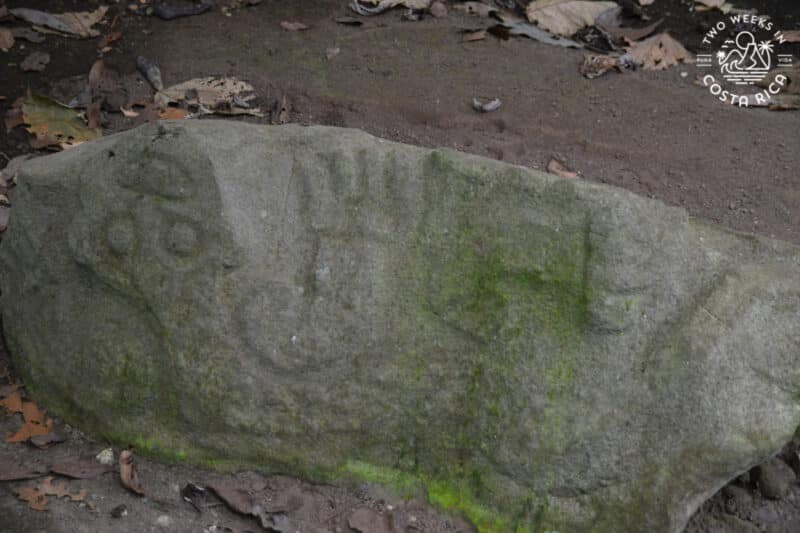
Birds & Wildlife
As a bonus to the archaeological aspects of the site, the Guayabo National Monument makes for a nice nature walk and is a prime spot for birding. The trails pass through beautiful, lush jungle, and there are lots of birds and other wildlife to see.
During our visit, we saw birds like the Keel-billed Toucan, Collared Aracari, Gray-headed Chachalaca, and a lot of insects like leaf-cutter and army ants, butterflies, and some giant grasshoppers.
Planning Your Visit to Guayabo National Monument
Hours
Guayabo National Monument is open daily, 8:00 a.m. to 3:30 p.m.
Duration
Allow about 1.5 hours for a leisurely walk through the site to see all the artifacts. Some people may need less time, as the trails are fairly flat and easy (but do have some stairs).
Cost
$5 (₡2,500) non-residents (adults & children age 2+)
$2 (₡1,000) resident/citizen adults (ages 13+)
$1 (₡500) children resident/citizen (ages 2-12)
*Prices + 13% VAT.
Guided Tours
Although there are informative signs along the trails, we recommend hiring a guide. This is one instance where a guide really adds value and can teach you more about what you are seeing so that you get the most out of your visit.
The local association (U-Sure) offers tours with educated guides that can answer questions and teach you much more about the history of Guayabo National Monument.
Cost of Guided Tour
Non-residents (English): $40 (₡20,000) for 1-3 people (total, not per person). Additional people are $5 (₡2,500) per person.
Residents/citizens (Spanish): $30 (₡15,000) for 1-3 people (total, not per person). Additional people are $3 (₡1,500) per person.
Group tours of 10 or more people can be arranged at special rates, depending on the number of participants. Maximum group size per guide is 20 people.
*Entrance to the monument is not included and can be purchased the day of the tour (rates above).
Duration of the Guided Tour
1.5 hours (approximately)
Booking Information
Previous reservations are required. Contact U-Sure Monday-Saturday from 9:00 a.m. to 3:30 p.m.
WhatsApp: +506 8534-1063
Email: reservaciones@usurecr.org
What to Wear/Bring
- Closed-toe Shoes: Required by park officials because of the many biting/stinging insects and occasional snakes (it is the jungle, after all). We actually encountered a lot of ants crossing the trail on our visit, so were very happy to have our hiking boots.
- Insect Repellent: Some trails are shaded and have a lot of mosquitoes (especially in the rainy season, May through November).
- Water/snacks: Support the locals by buying snacks and light refreshments from the vendors right outside the park entrance. Otherwise, be sure to stock up in advance. Aside from a couple of small restaurants and a mini-grocery store (south of the park), there is not much around once you get out of Santa Cruz/Turrialba. For those packing a lunch, the park has some picnic tables across the street from the main office near the bathroom and small gift shop.
See our post 10 Day Pack Essentials for more helpful packing tips.
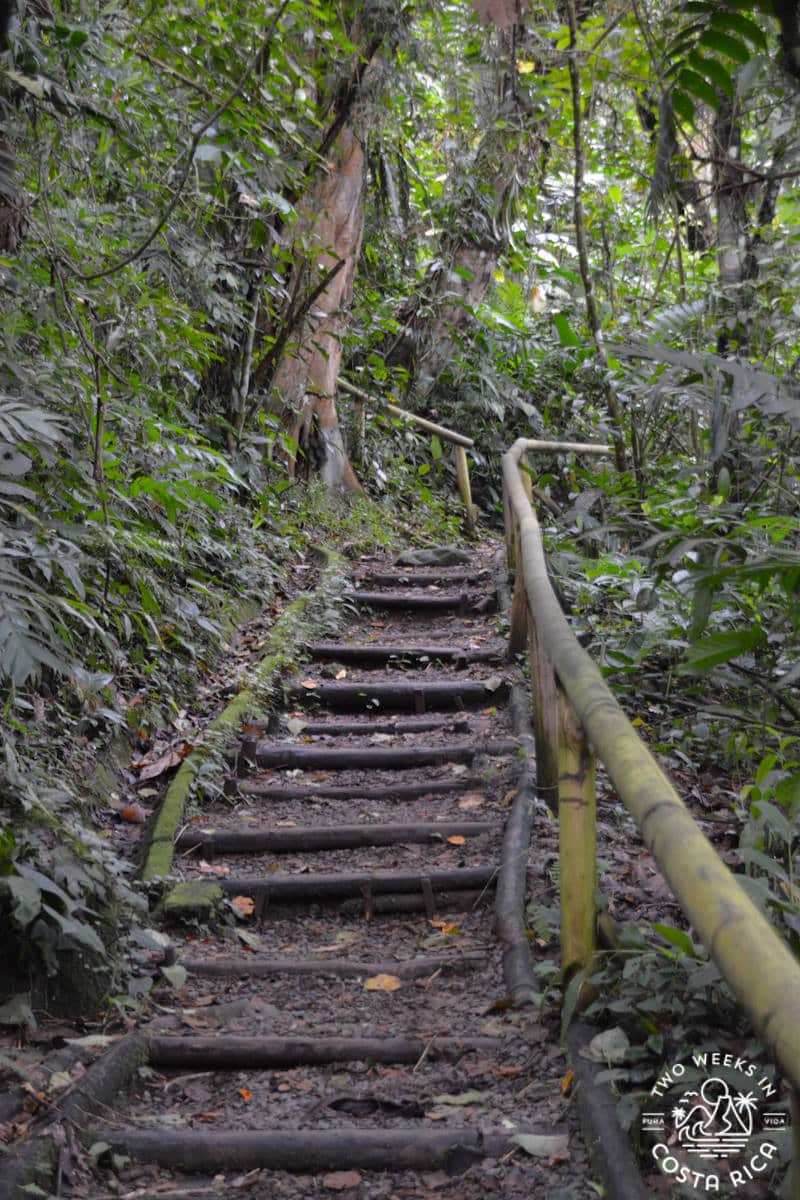
Driving Directions
The drive from downtown San Jose takes around 2-2.5 hours, depending on traffic.
Option 1: From San Jose, take Route 2 to the city of Cartago. In Cartago, take Route 10 (Ave Central) through the city going east. At Nuestra Senora de Los Angeles (a large, well-known cathedral), go right, following Route 10 toward Paraiso and continuing to Turrialba.
In Turrialba, take Calle 2 north and cross a bridge (over the Rio Turrialba). After you cross the bridge, take your first right and follow Route 415 (unmarked), which eventually turns into the Radial Guayabo. This road will bring you up the hill to the park entrance.
The last 3 km (1.8 miles) are rough dirt and best accessed with a four-wheel drive, but cars do drive it. (Approximate drive time from San Jose is 2 hrs. 20 min.)
Option 2 (if you have a 4×4 vehicle): In Cartago, go north of Nuestra Senora de Los Angeles and connect with Route 219 to Route 230. Follow Route 230 (paved) all the way to the town of Santa Cruz (north of Turrialba).
Once you pass the church in Santa Cruz, look for a road on the left. Take this road (4×4 recommended for this stretch) 10 km (6 miles), following signs for the National Monument. (Approximate drive time from San José is 2 hrs.)
Hotels Near Guayabo National Monument
If you’d like to spend more time in the Turrialba area, here are some options.
Guayabo Lodge ($80-140/night): Located in Santa Cruz de Turrialba, this cozy lodge is only 10 km (6 miles) from the national monument (by 4×4) and has outstanding views of the nearby Turrialba Volcano and surrounding mountains.
Ladera Hotel ($70-100/night): Also close at only 13 km (8 miles) from the monument entrance (by 4×4). This B&B offers sweeping mountain and valley views.
For those without four-wheel drive, the road to the monument from Santa Cruz may be passable with a regular car (especially in the dry season), but be sure to inquire with your hotel.
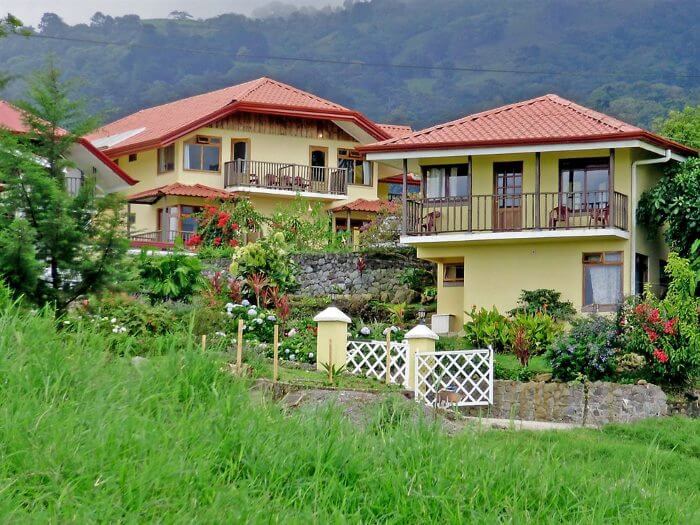
Have you seen Costa Rica’s most prized archaeological site or have questions about visiting these ruins? Leave us a comment below.
Looking for more information to help you plan your Costa Rica trip? Check out these posts:
Orosi: A Valley of Green – Not far from Turrialba is the charming town of Orosi with a national park, coffee tours, and Costa Rica’s oldest church that is still in use.
1-2 Days in San Jose – Read this post if you’d like to spend a couple of days in downtown San Jose exploring the museums and National Theater.
Traditional Foods in Costa Rica – Learn about typical local cuisine options with this post.
Cultural Heritage and Gardens – Explore more cultural or historic sights in Costa Rica.
Things to Do in Costa Rica – For 150+ more activities to do in Costa Rica, see this page. We break down the options for easy navigation.



